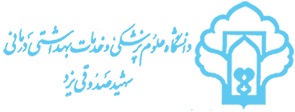(2025) Epidemiology of Soft Tissue Sarcoma in Iran: Four-Year National Cancer Registry Data Report (2014–2017). Cancer Reports. ISSN 25738348
|
Text
CNR2-8-e70118.pdf Download (1MB) |
Abstract
Introduction: An uncommon and diverse class of cancers originating from mesenchymal tissues is designated as soft tissue sarcoma (STS). To develop effective preventive and treatment strategies for STS, it is essential to gain a deeper understanding of the epidemiological trends associated with the disease. This research will analyze the 4-year age-standardized incidence rate (ASIR) and geographical distribution of STS in Iran in great detail. Methods: The study population comprised 4968 cases of STS recorded in the Cancer Registry System between 2014 and 2017. The demographic data examined included gender, place of residence, and year of diagnosis. The age-standardized rate (ASR) of STS incidence was calculated for each location using the World Standard Population. The data were examined using the program ArcMap10.5. The geographic distribution of STS was investigated using the Moran test. Results: The ASRs for STS in Iran from 2014 to 2017 were recorded as 1.25 (ASR in male: 1.47, ASR in female: 1.06), 1.36 (ASR in male: 1.46, ASR in female: 1.29), 1.37 (ASR in male: 1.52, ASR in female: 1.21), and 1.78 (ASR in male: 1.58, ASR in female: 1.98), respectively. In 2014 and 2015, age-standardized incidence at the national level showed a statistically significant regional dispersion that appeared as a clustering pattern, according to Moran's test. However, in 2016 and 2017, this dispersion failed to become statistically significant. Interestingly, men had a greater rate of STS incidence than females. As age grows, ASIR shows a steadily rising trend. The most important gains are shown in the 55–59 age group, which peaked at 4.535 in 2017, and the 80–84 age group, which peaked at 10.848 in the same year. Conclusion: The incidence of STS in Iran is lower than the global average. The discrepancies in gender disparities, regional distribution, and incidence rates underscore the complexity of STSs. The findings of this study may assist healthcare professionals and policymakers in the development of region-specific plans for the treatment, early detection, and prevention of STSs. © 2025 The Author(s). Cancer Reports published by Wiley Periodicals LLC.
| Item Type: | Article |
|---|---|
| Keywords: | adult; aged; Article; cancer epidemiology; cancer registry; cohort analysis; descriptive research; female; gender inequality; geographic distribution; health care personnel; human; Iran; major clinical study; male; residence characteristics; sex difference; soft tissue sarcoma; standardized incidence ratio |
| Divisions: | Education Vice-Chancellor Department > Faculty of Medicine > Department of Basic Education |
| Journal or Publication Title: | Cancer Reports |
| Journal Index: | Pubmed, Scopus |
| Volume: | 8 |
| Number: | 1 |
| Publisher: | John Wiley and Sons Inc |
| Identification Number: | https://doi.org/10.1002/cnr2.70118 |
| ISSN: | 25738348 |
| Depositing User: | dr mehdi mokhtari |
| URI: | http://eprints.ssu.ac.ir/id/eprint/34813 |
Actions (login required)
 |
View Item |



